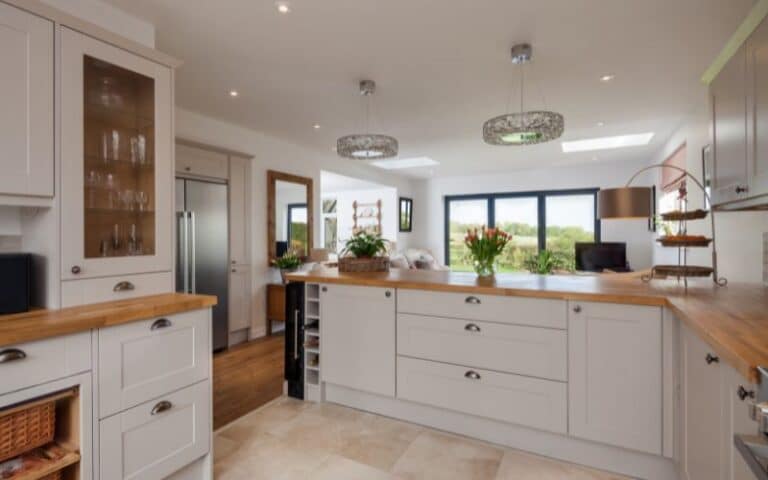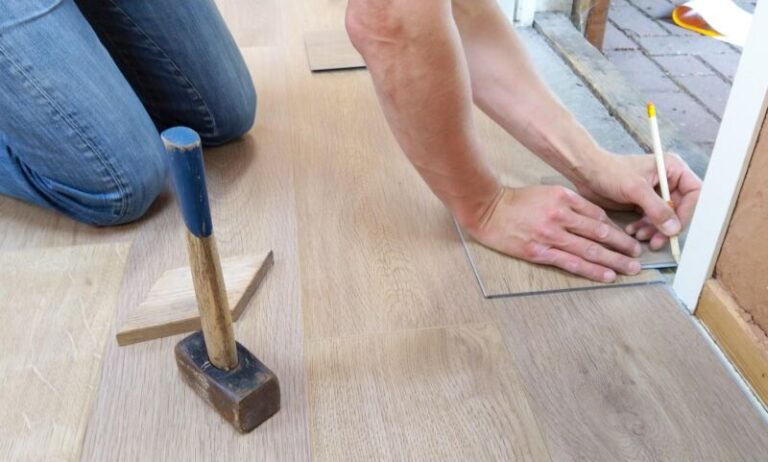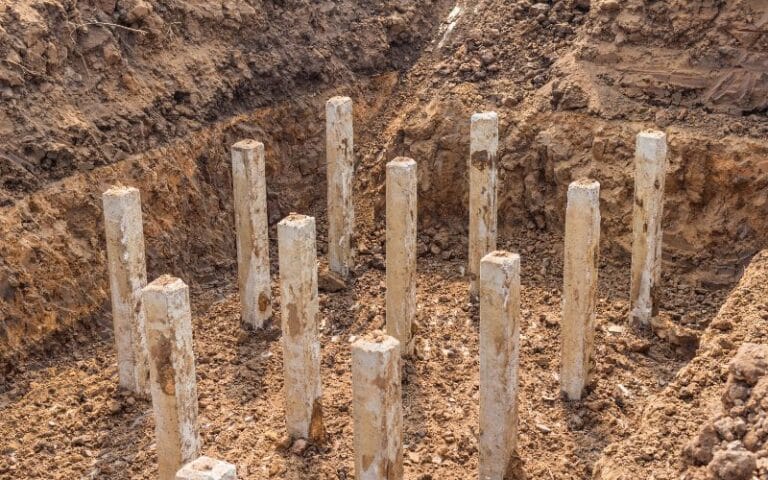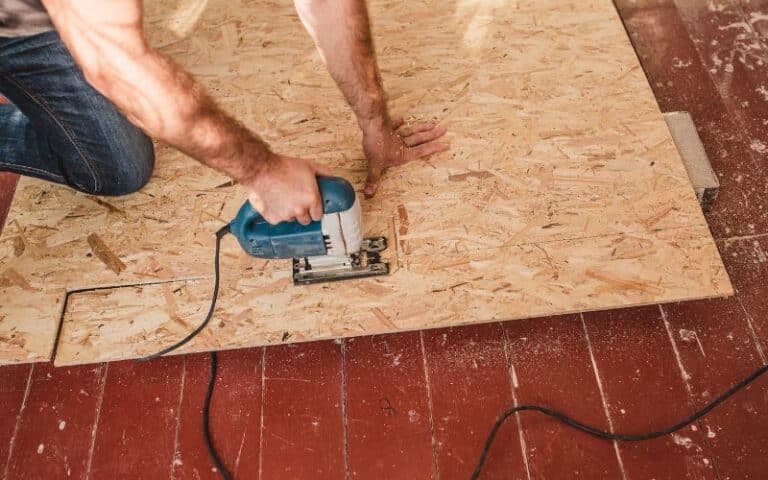Hardwood flooring is an excellent addition to your home to enhance its beauty.
You’ve come to the right place if you are confused between sealed hardwood floors vs. unsealed. Keep reading to learn how they are different.
Ready for a Flooring Quiz?
What are Sealed Hardwood Floors?
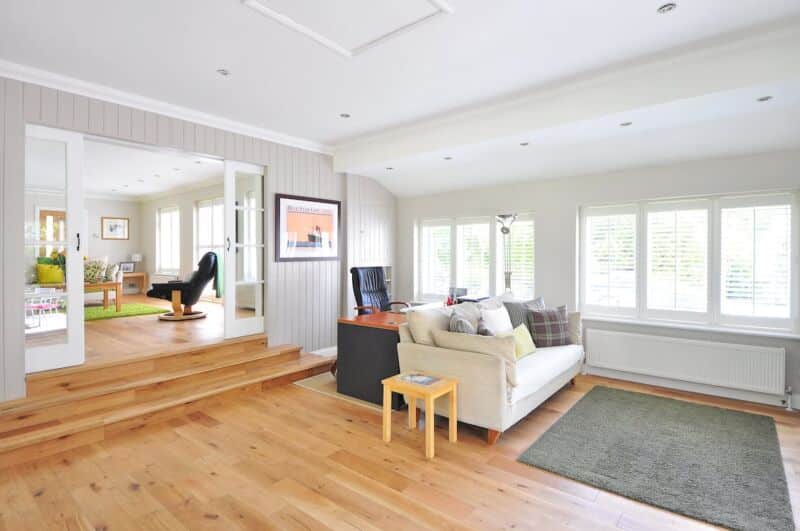
“sealed hardwood floors” frequently comes up when discussing hardwood flooring cleaning solutions or methods.
The term is also found in directions for steam mops, which you should never use on any wood flooring.
The main problem with sealing hardwood floors is that, while you can seal the top surface of the wood, the gaps or seams between the floor boards or planks cannot be securely sealed.
Therefore, this limitation makes your wood flooring susceptible to moisture damage.
Due to their treatment with penetrating or surface sealants, sealed hardwood floors are often referred to as finished hardwood floors.
Oil-based sealants cover the surface, while water-based sealants permeate the wood.
However, all sealed hardwood floors are not necessarily treated with sealants, as some only have a varnish or wax coating.
What are Unsealed Hardwood Floors?
Unsealed hardwood floors, as the name implies, are floorboards that have not been waxed, varnished, or treated with sealants.
If it isn’t sealed, your hardwood floor is more vulnerable to damage and deterioration.
Even though unfinished wood floors have a certain allure, most contemporary homeowners choose sealed hardwoods for their many advantages.
Older houses and flats typically have unsealed hardwood floors; most modern homeowners opt to seal their hardwood floors.
Sealed Hardwood Floors vs. Unsealed
Let’s dive in and look at the difference between sealed and unsealed floors.
#1. Sealed Hardwood Floors Have a Glossy Finish
Since sealed floors are treated with varnish, sealants, or wax, they have a glossy finish (especially in the case of oil-based sealants).
However, this isn’t the case with unsealed floors, which may appear dull after some time.
You can use vinegar or olive oil to make your unsealed hardwood floors appear shiny.
#2. You Can’t Installed Unsealed Hardwood Floors in Every Room
Another advantage of sealed floors is that you can install them in all rooms of your home. These floors work in areas with high moisture content, such as the bathroom or kitchen.
However, the same doesn’t apply to unsealed floors since they can’t withstand much moisture and are likely to get damaged.
Moreover, you can also install sealed hardwood floors in an area that receives a lot of traffic as they can withstand.
#3. Sealed Hardwood Floors May Have Different Shades
Certain sealants contain color, while others are transparent. Pigmented sealants can create a particular appearance or effect on your sealed floors before adding a finish or after stain application.
Unsealed flooring only comes with natural colors.
#4. It Is Easier to Clean Sealed Hardwood Floors
Unsealed flooring is quite tough to maintain and clean as you must clean them with soft-bristled brooms and mop with vinegar diluted in water.
#5. Certain Commercial Hardwood Floor Cleaners are Not Suitable for Unsealed Floors
Contrary to what you might read on the label, you should not use most commercial wood floor cleaners on unsealed floors.
Use vinegar mixed in water to wipe unsealed flooring to be on the safe side. Additionally, ensure that after cleaning, no moisture is left behind.
How to Safely Clean Hardwood Flooring?
The fundamental cleaning guidelines are the same regardless of the sealer or finish of your wood flooring.
Avoid using too much moisture when cleaning; immediately mop up spilled liquids and water.
A wood floor doesn’t require wet mopping or steam cleaning, and both of these techniques can cause damage to your flooring.
The primary goal of cleaning is to prevent grit and debris from gathering on the floor since they can scratch and fade the finish when you walk on it.
The simplest approach to maintaining a finish over time is to sweep or vacuum it frequently.
Ideally, it would be best if you swept or vacuumed once a day or at least once every two to three days.
You can use a hard flooring attachment on your vacuum to clean your hardwood flooring. Doing so also helps avoid scratches.
If the floor requires a thorough cleaning, you can use a microfiber mop, soft sponge, towel, or damp cloth. Avoid using a string mop since it absorbs too much water.
Always rinse the mop completely after each rinse, and move it in a parallel direction to the floorboards. Dry the floor using a towel in the last step to eliminate any remaining moisture.
You rarely require cleaning products on your hardwood floors, mainly since they are not installed in areas that require routine sanitization.
However, if you decide to use a cleaning product, be sure it is made for hardwood floors and your particular type of floor finish.
Ask your flooring manufacturer, installer, or refinisher for advice if your flooring is new or recently refinished.
Avoid harsh cleaning products containing polish, wax, vinegar, or ammonia. These ingredients may leave a residue on your floors, damaging them in the long run.
You will typically find safe cleaners on hardwood floors in spray bottles rather than concentrates that you dilute in a bucket.
Regardless of the type of cleaner you are using, apply it sparingly. Only use them when essential, such as to remove tough stains or clean up excessively dirty areas.
Wrapping Up
When comparing sealed hardwood floors vs. unsealed, sealed floors win as they have added layers of protection.
This layer adds shine to the floors and also prevents water damage. However, unsealed are pretty sensitive to moisture.

